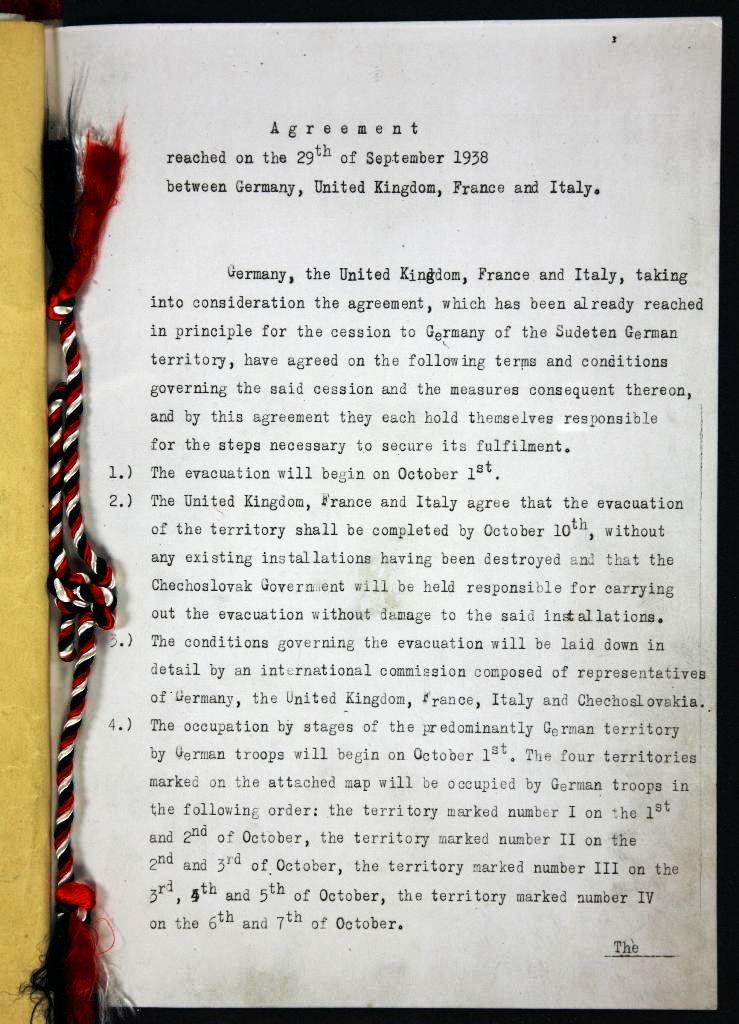Munich Agreement
What was the Munich Agreement?

Opening page of the Munich Agreement Credit: blog.nationalarchives.gov.uk
Although desperate to keep world peace, with Germany threatening to invade Czechoslovakia, Chamberlain started to get ready for a war, by digging trenches, issuing gas masks for the people, and air raid shelters were all put in place. But Benito Mussolini, Prime Minister of Italy, suggested that they should negotiate with Hitler to try and keep him from starting another war. This was because Italy was afraid of fighting both Britain and France, as they were not prepared for another war. Most countries, including Britain, did not want another war after World War I. This was apparent as Hitler kept making his demands on the Munich Agreement higher, yet Chamberlain kept agreeing to them. Although multiple countries signed the Munich Pact, Czechoslovakia was excluded from the signing of it, as Britain and France were afraid that they would ruin the deal with Hitler.
The Munich Agreement, or the Munich Pact, had not only given Hitler the Sudetenland but also gave him 66% of Czechoslovakia’s coal, 70% of its iron and steel, and 70% of its electrical power. This was put in place to prevent the Czech government from fighting back when Hitler occupied the Sudetenland. France, Italy, Germany, and Britain all signed the Munich Agreement.